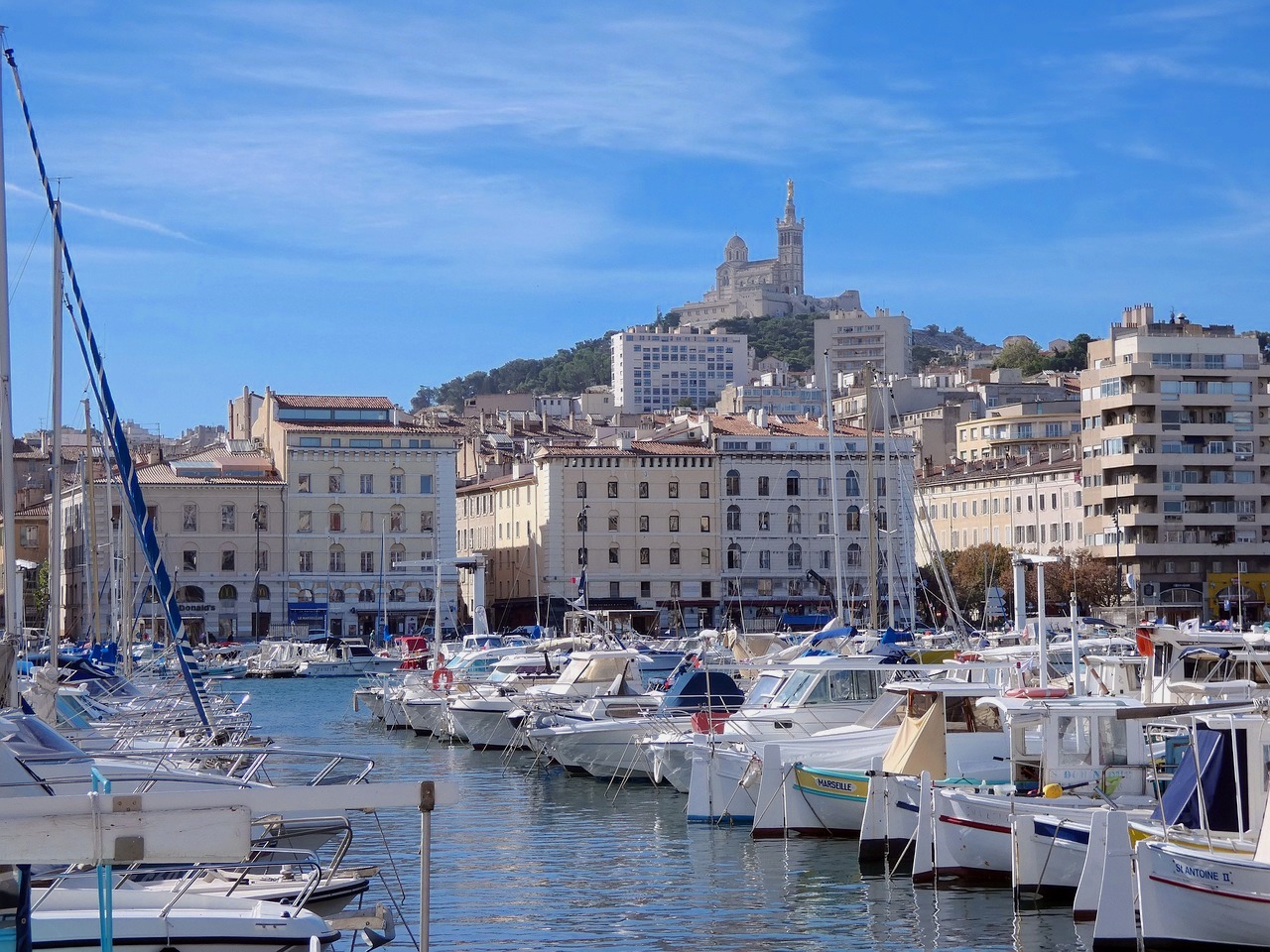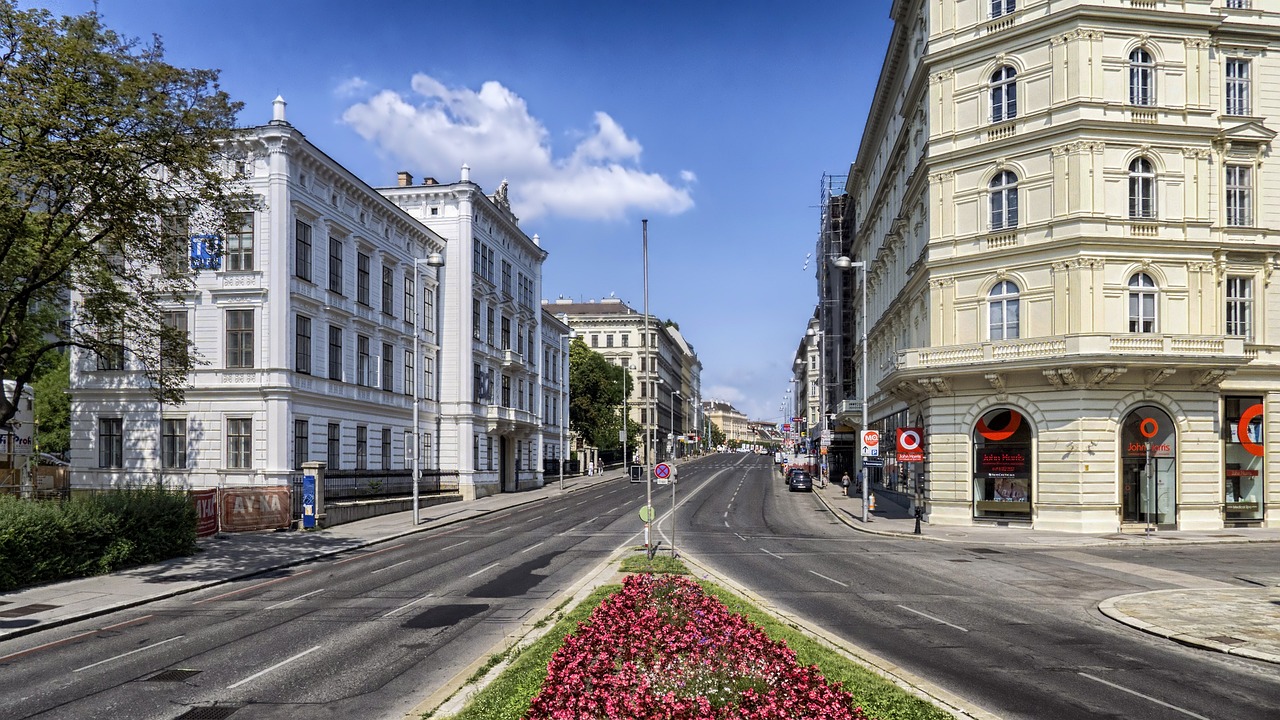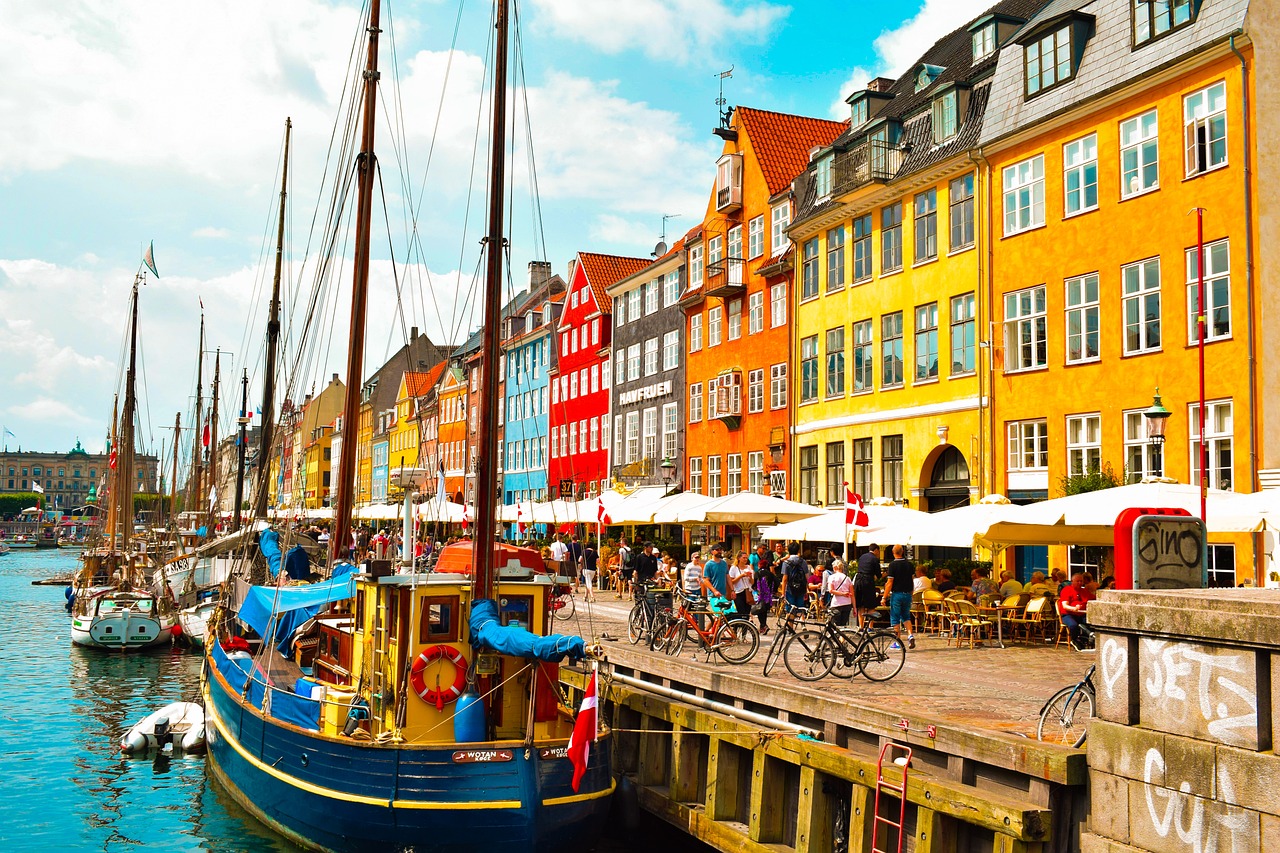Marseille is a city located in the southeastern coast of France, along the Mediterranean Sea. It is the second-largest city in France, after Paris, and the largest commercial port in the country. Marseille is also the capital of the Provence-Alpes-Côte d’Azur region, and is known for its rich history, cultural diversity, and beautiful coastline. The city has a long history of trade and migration, with a mix of cultures from Europe, North Africa, and the Middle East.
As for its borders, Marseille is bordered by the Mediterranean Sea to the south and west. To the north, it is surrounded by the Massif de l’Étoile mountain range, and to the east, it is bordered by the Calanques National Park.
Marseille distinguishes itself from nearby cities like Nice, Aix-en-Provence, Avignon and Montpellier, with its vibrant urban energy, multicultural vibe, and Mediterranean allure. Its bustling port, diverse neighborhoods, and dynamic street life create a unique experience that sets it apart from its neighboring cities in the region.
Short History
Marseille has a long and rich history dating back over 2,600 years. The city was founded by Greek sailors from Phocaea in 600 BC and was named Massilia. It was a prosperous port city during the Roman Empire and played a crucial role in the development of trade and commerce throughout the Mediterranean region.
Over the centuries, Marseille was conquered and ruled by various groups, including the Visigoths, the Ostrogoths, and the Moors. In the 13th century, Marseille became part of the Kingdom of France and saw significant growth and development during the Renaissance period.
In the 18th century, Marseille became a major center for trade and commerce, and the city’s port was expanded and modernized. Marseille also played a key role in the French Revolution, and was a center of resistance during World War II.
Today, Marseille is a thriving city with a rich cultural heritage and a unique blend of European and Mediterranean influences. Its historic architecture, bustling port, and vibrant cultural scene make it a popular destination for tourists from around the world.
Architecture
The architecture of Marseille reflects the city’s long and diverse history, with a mix of styles and influences from different periods and cultures. Some of the most notable architectural styles in Marseille include:
- Romanesque: Marseille’s architectural heritage includes Romanesque elements dating back to the medieval period. The Marseille Cathedral (Cathédrale de la Major) exemplifies this style with its imposing façade, robust walls, and rounded arches.
- Neo-Byzantine: The Basilica of Notre-Dame de la Garde, an iconic symbol of Marseille, features a prominent Neo-Byzantine style. Its golden statue of the Virgin Mary atop the bell tower and intricate mosaics inside showcase the Byzantine influence.
- Haussmannian: Like many French cities, Marseille also features Haussmannian architecture. This style, popular during the 19th century, is characterized by large, symmetrical buildings with uniform façades, wrought-iron balconies, and elaborate cornices. Cours Julien is an area where Haussmannian architecture is prominent.
- Modernist: Marseille has embraced modernist architecture, particularly in the 20th century. Le Corbusier’s iconic Cité Radieuse, also known as Unité d’Habitation, stands as a notable example of modernist design, with its bold concrete structure and functionalist principles.
- Contemporary: In recent years, Marseille has seen a surge in contemporary architecture. The MuCEM (Museum of European and Mediterranean Civilizations), designed by Rudy Ricciotti, is a prime example. Its striking glass façade juxtaposed with the historic Fort Saint-Jean creates a visually captivating blend of old and new.
Marseille’s architectural landscape is a tapestry of styles spanning different eras. This diversity reflects the city’s evolving history and its embrace of both tradition and innovation. Exploring Marseille’s architectural gems allows visitors to appreciate the city’s unique blend of influences and the artistic expressions that have shaped its urban fabric.
Museums and Galleries
Marseille is home to many interesting museums and galleries that offer a glimpse into the city’s history, culture, and art. Some of the most notable ones include:
- MuCEM (Museum of European and Mediterranean Civilisations): This museum is dedicated to the history and culture of the Mediterranean region and is housed in a stunning modern building at the entrance to the Old Port.
- Musée d’Histoire de Marseille (Museum of Marseille History): This museum chronicles the city’s rich history, from its Greek and Roman origins to the present day.
- Musée des Beaux-Arts (Fine Arts Museum): This museum features an impressive collection of European art, including works by Van Gogh, Monet, and Picasso.
- Musée Cantini (Cantini Museum): This museum focuses on modern and contemporary art, with a particular emphasis on French artists.
- Musée Regards de Provence (Museum of Provence Views): This museum celebrates the art and culture of the Provence region, with a collection of paintings, sculptures, and other artifacts.
- La Friche Belle de Mai: This former tobacco factory has been transformed into a cultural center, with art exhibits, performances, and events throughout the year.
- Musée Grobet-Labadié: This museum is housed in a beautiful 19th-century mansion and features decorative arts from the Renaissance to the 20th century.
Marseille’s museums and galleries offer a diverse range of exhibits and experiences, showcasing the city’s artistic traditions.
Landmarks and Monuments
Marseille is known for its beautiful landmarks and monuments that attract tourists from all over the world. Here are some of the most interesting ones:
- Basilique Notre-Dame de la Garde – a stunning basilica built on a hilltop that offers panoramic views of the city and the sea.
- Château d’If – a fortress located on a small island that was made famous by the book “The Count of Monte Cristo.”
- Palais Longchamp – a grand monument that houses two museums and a beautiful park.
- Cathédrale de la Major – a stunning cathedral that blends different architectural styles from different time periods.
- Abbaye Saint-Victor – an ancient abbey that dates back to the 5th century.
- Fort Saint-Nicolas – a historic fort that was built to protect Marseille from invaders.
- Palais de Pharo – a grand palace that was once the residence of Napoleon III.
Visitors to Marseille are sure to be impressed by the beauty and grandeur of these historic sites.
Parks and Green Spaces
There are several parks and green spaces in Marseille that are worth visiting for their natural beauty and recreational activities. Here are some of the most interesting parks in Marseille:
- Parc Borély: This large park is located in the southern part of the city and features a lake, a château, gardens, and numerous walking and cycling paths.
- Parc Longchamp: This park was created in the 19th century and features a palace, gardens, fountains, and a natural history museum.
- Calanques National Park: This park is located just outside the city and features stunning coastal cliffs, beaches, and hiking trails.
- Jardin des Vestiges: This park is located in the old town of Marseille and features ancient Greek and Roman ruins.
- Parc du 26e Centenaire: This park is located in the center of the city and features a large fountain, gardens, and a playground.
- Parc de la Colline Puget: This park is located on a hill and features panoramic views of the city, as well as gardens and walking paths.
- Parc de la Moline: This park is located in the northern part of the city and features a lake, gardens, and walking paths.
Marseille offers visitors a variety of green spaces to enjoy, ranging from small neighborhood parks to large national parks with stunning natural scenery.
Beaches
Marseille is blessed with beautiful beaches along its coastline and near its surrounding areas. Here are some beaches worth visiting in or near Marseille:
- Plage du Prado: Located in the southern part of Marseille, Plage du Prado is the city’s largest and most popular beach. It offers sandy shores, clear waters, and a range of facilities, including restaurants, bars, and water sports activities.
- Plage des Catalans: Situated near the Vieux-Port (Old Port) of Marseille, Plage des Catalans is a charming and easily accessible beach. It features a small sandy stretch, picturesque views, and nearby amenities, making it a convenient spot for a quick dip or sunbathing.
- Plage de la Pointe Rouge: Located in the southern part of Marseille, Plage de la Pointe Rouge is a popular beach with a long sandy shoreline. It offers a range of water sports activities, beachside restaurants, and a lively atmosphere.
- Calanque de Sormiou: While not a traditional beach, Calanque de Sormiou is a stunning natural inlet with crystal-clear turquoise waters surrounded by towering cliffs. It is a picturesque spot for swimming, snorkeling, and enjoying the rugged coastal beauty. Please note that access to Calanque de Sormiou is limited, and a permit or reservation may be required.
- Plage de la Couronne: Located near the town of Martigues, about 30 kilometers west of Marseille, Plage de la Couronne is a beautiful sandy beach that offers a more relaxed and serene atmosphere. It is ideal for those seeking a quieter beach experience away from the bustling city.
- Plage de Carry-le-Rouet: Situated in the town of Carry-le-Rouet, approximately 30 kilometers west of Marseille, Plage de Carry-le-Rouet is a picturesque beach known for its crystal-clear waters and scenic surroundings. It is a popular spot for swimming, sunbathing, and snorkeling.
- Plage de Cassis: Located in the charming town of Cassis, about 30 kilometers east of Marseille, Plage de Cassis is a lovely beach nestled between rocky cliffs. It offers stunning views of the Calanques National Park and is an ideal place for relaxation and enjoying the natural beauty of the area.
These beaches near Marseille provide an opportunity to soak up the sun, swim in the Mediterranean waters, and enjoy a range of water sports activities. Whether you prefer the lively atmosphere of urban beaches or the tranquility of more secluded spots, Marseille and its surrounding areas offer a diverse range of coastal experiences for beach lovers.
Shopping Districts
Marseille is a perfect destination for those who love to explore different shopping areas that the city has to offer. Here are some of the best shopping districts in Marseille worth visiting:
- Rue Saint-Ferreol: This is one of the main shopping streets in Marseille, known for its high-end boutiques and department stores.
- La Canebière: This is a historic shopping district in Marseille that has been around for over 300 years. It offers a mix of shops, cafes, and restaurants.
- Les Docks Village: This is a modern shopping district located in a former warehouse. It offers a range of shops, cafes, and restaurants, as well as an outdoor market.
- Rue Paradis: This is a chic shopping street in Marseille, known for its luxury boutiques and designer stores.
- Le Panier: This is an old quarter of Marseille that has been transformed into a trendy shopping district. It offers a range of shops, cafes, and restaurants, as well as artisanal crafts and souvenirs.
These shopping districts offer a mix of modern and historic shopping experiences. From luxury boutiques to artisanal crafts, there is something for everyone in Marseille.
Food and Drink
Marseille offers a delightful culinary experience. Visitors can taste the traditional dishes and drinks of the region, as well as the influence of the Mediterranean cuisine. Some of the must-try food in Marseille includes:
- Bouillabaisse: a fish stew made with various kinds of fish and flavored with saffron and garlic.
- Navettes: boat-shaped cookies made with orange blossom water, often served during Candlemas.
- Panisse: a savory chickpea flour cake, fried and served with aioli sauce.
- Ratatouille: a vegetable stew made with eggplant, zucchini, peppers, and tomatoes.
- Fougasse: a flatbread similar to pizza, often served with herbs and olive oil.
- Pastis: an anise-flavored alcoholic drink, usually served as an aperitif.
- Rosé wine: the region produces many delicious rosé wines, perfect for a summer evening.
There are also many local markets where visitors can taste fresh produce and ingredients, such as the Marché de la Plaine or the Marché des Capucins.
Transportation
Marseille has an efficient public transportation system that consists of buses, trams, and metros. The metro system consists of two lines that cover the city center and its outskirts. Additionally, there is a dense network of buses and trams that connect different parts of the city. Taxis and ride-sharing services are also available. For those who prefer a more active mode of transportation, there are several bike-sharing services available throughout the city, as well as dedicated bike lanes. Walking is also a great way to explore the city, as many of Marseille’s attractions are located within walking distance of each other. However, it is important to note that some areas of the city, particularly in the northern parts, are not very pedestrian-friendly, so it is important to be cautious and aware of your surroundings.
Safety
Marseille is generally considered safe for tourists, but like any big city, it is important to take precautions to avoid becoming a victim of crime. Petty theft, such as pickpocketing and bag snatching, can occur in crowded tourist areas, so it is best to keep valuables out of sight and use a money belt. Additionally, some neighborhoods in Marseille have higher crime rates than others, so it is important to be aware of your surroundings and avoid wandering into unfamiliar areas at night. As always, it is a good idea to research your destination and take appropriate safety measures while traveling.
Expensive or Cheap
Marseille can be considered as a moderately expensive city in France, with prices slightly lower than in Paris. The cost of living in Marseille will depend on your lifestyle and budget, but generally, accommodation and dining out can be affordable or expensive depending on the location and type of establishment. Public transportation is relatively cheap, but taxi fares can be expensive. Overall, Marseille is a great city to visit if you budget well.
Best Time to Travel
The best time to travel to Marseille largely depends on personal preferences for weather, crowd levels, and the type of activities you wish to engage in. Here’s a breakdown of the different seasons in Marseille to help you decide:
- Summer (June to August): Summer is a popular time to visit Marseille, as the weather is warm and sunny with average temperatures ranging from the mid-20s to low 30s degrees Celsius (70s to 90s degrees Fahrenheit). The city comes alive with beachgoers, outdoor events, and a vibrant atmosphere. However, it can be crowded, especially in August when many Europeans take their summer vacations.
- Spring (April to May) and Autumn (September to October): These shoulder seasons offer pleasant weather, with temperatures ranging from the high teens to low 20s degrees Celsius (60s to 70s degrees Fahrenheit). It is less crowded than summer, making it a great time to explore the city, visit attractions, and enjoy outdoor activities without the peak season crowds.
- Winter (November to February): Winter in Marseille is mild, with temperatures averaging in the mid-teens degrees Celsius (50s degrees Fahrenheit). While it can be cooler and rainier, Marseille still retains its charm and offers a quieter and more affordable experience. This season is ideal for exploring indoor attractions, museums, and enjoying the city’s culinary delights.
It’s also worth considering that Marseille hosts various cultural events throughout the year, such as the Marseille Jazz Festival in July and August and the Fiesta des Suds music festival in October. These events can add an extra layer of vibrancy to your visit.
Each season offers its own unique charm, from vibrant summers to milder shoulder seasons and quieter winters. Consider your preferences and plan accordingly to make the most of your visit to this vibrant coastal city.
Date Ideas, Activities or Experiences
Marseille, the oldest city in France, is a romantic destination with plenty of date ideas for couples. From its picturesque port to its stunning coastline, there are numerous topics to do and see in Marseille. Here are some ideas in Marseille to make your visit unforgettable:
- Take a sunset cruise: A romantic sunset cruise is a must-do when in Marseille. Enjoy a glass of champagne while admiring the breathtaking views of the coastline.
- Stroll through Le Panier: Le Panier is a charming neighborhood in Marseille that features narrow streets, colorful buildings, and trendy cafes.
- Explore Calanques National Park: A hike through Calanques National Park is a great way to spend a day in Marseille. The park features picturesque landscapes, turquoise waters, and hidden coves.
- Visit Chateau d’If: Take a boat ride to the island of Chateau d’If and explore the historic fortress that inspired the famous novel, The Count of Monte Cristo.
- Take a cooking class: Learn to cook the local cuisine together and enjoy a romantic dinner with a stunning view.
- Admire the Notre-Dame de la Garde Basilica: Enjoy the panoramic views of Marseille from the highest point in the city and admire the stunning architecture of the Basilica.
- Wander through the Old Port: The Old Port is a bustling place full of restaurants and cafes, and a perfect spot to stroll hand in hand with your partner.
- Take a wine tour: Marseille is surrounded by vineyards and wine estates, and taking a wine tour is a great way to spend a day tasting the local wines.
- Discover the Museum of European and Mediterranean Civilizations: A unique museum that showcases the cultural diversity of the Mediterranean region.
- Relax on the beach: With over 20 beaches to choose from, enjoy a romantic day on the sandy shores of Marseille.
Whether you prefer exploring the historic sites or enjoying the scenic beauty of the city, Marseille has something to offer for every couple.
Fun and Interesting Facts
Marseille has a unique charm and is home to many interesting sights and attractions that make it a popular destination for tourists. Here are some fun facts about Marseille:
- Marseille is the second-largest city in France after Paris, and the largest commercial port in the country.
- The city was founded in 600 BC by Greek sailors from Phocaea, making it one of the oldest cities in Europe.
- Marseille is known for its vibrant street art scene, with many murals and graffiti pieces adorning the city’s buildings and walls.
- The iconic Marseille soap, made from olive oil and soda, has been produced in the city since the 17th century.
- Marseille is home to the largest mosque in France, the Grand Mosque of Marseille.
- The city has a strong connection to the sea, with many seafood restaurants serving up fresh catches from the Mediterranean.
- Marseille was the European Capital of Culture in 2013, which helped to boost tourism and bring attention to the city’s rich cultural heritage.
- The city is surrounded by stunning natural beauty, including the Calanques, a series of rocky cliffs and fjords along the Mediterranean coast.
- Marseille is famous for its vibrant music scene, with many talented musicians and bands hailing from the city.
- Marseille is known for its unique accent and dialect, which is a blend of French, Arabic, and other Mediterranean languages.
Conclusion
Marseille is a fascinating city with a rich history and culture that make it a must-visit destination in France. With its stunning natural beauty, vibrant street art, delicious cuisine, and lively music scene, Marseille has something for everyone. Whether you’re interested in exploring the city’s museums and landmarks, relaxing on its beautiful beaches, or simply soaking up its unique atmosphere, Marseille is sure to captivate and inspire you.



